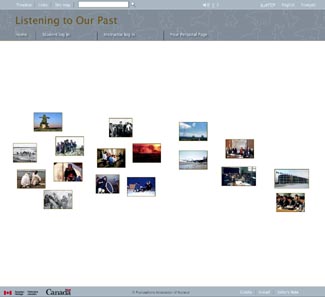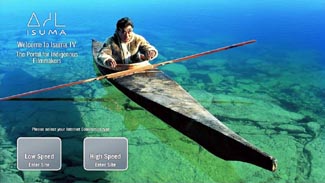In This Issue....
From the Editor: New Realities
In the News: Must-visit WebsitesBAS Vignette: Memories of a Non-Doggy Man
Sledge Dog Memorial Fund Update
Lost and Found: Recovering Dogs Gone Astray
Book Review: Hunters of the Polar North
Navigating This
Site
Index of articles by subject
Index
of back issues by volume number
Search The
Fan Hitch
Articles
to download and print
Ordering
Ken MacRury's Thesis
Our
comprehensive list of resources
Talk
to The
Fan Hitch
The Fan
Hitch home page
ISDI
home page
Editor's/Publisher's Statement
Editor: Sue Hamilton
Webmaster: Mark Hamilton
The
Fan Hitch, Journal of the Inuit Sled
Dog, is published four times a year. It is
available at no cost online at:
https://thefanhitch.org.
The Fan Hitch welcomes your letters, stories, comments and suggestions. The editorial staff reserves the right to edit submissions used for publication.
Contents of The Fan Hitch are protected by international copyright laws. No photo, drawing or text may be reproduced in any form without written consent. Webmasters please note: written consent is necessary before linking this site to yours! Please forward requests to Sue Hamilton, 55 Town Line Rd., Harwinton, Connecticut 06791, USA or mail@thefanhitch.org.
This site is dedicated to the Inuit Dog as well as related Inuit culture and traditions. It is also home to The Fan Hitch, Journal of the Inuit Sled Dog.
The Fan Hitch welcomes your letters, stories, comments and suggestions. The editorial staff reserves the right to edit submissions used for publication.
Contents of The Fan Hitch are protected by international copyright laws. No photo, drawing or text may be reproduced in any form without written consent. Webmasters please note: written consent is necessary before linking this site to yours! Please forward requests to Sue Hamilton, 55 Town Line Rd., Harwinton, Connecticut 06791, USA or mail@thefanhitch.org.
This site is dedicated to the Inuit Dog as well as related Inuit culture and traditions. It is also home to The Fan Hitch, Journal of the Inuit Sled Dog.
Must Visit Websites!
The following press releases introduce exciting websites whose content includes valuable information about Inuit Sled Dogs. But please don’t visit these sites for the doggie stuff alone! To understand, to truly know the Inuit Sled Dog, you must also know the People, for the two are so much a part of each other’s history and culture.

PRESS RELEASE
NOVEMBER 2007
NOVEMBER 2007
Launch of the Listening to our
Past web site
The Association des francophones du Nunavut is pleased to launch the new Listening to our Past web site, which should be very useful to Inuit students and to all those who are interested in the Inuit culture. The site can be found at http://www.traditional-knowledge.ca/ and is available in French, in English and in Inuktitut.
Listening to our Past offers online access to twelve Inuit Traditional Knowledge books published by the Language and Culture Program of the Nunavut Arctic College. These books provide information on various topics of the Inuit culture, such as Traditional Law, Traditional Health, Childrearing practices, and Shamanism, on the Development of Government Services in the Arctic, on the Creation of Nunavut as well as on the American Military Presence in the 1950’s. Nearly 70 elders and political leaders were interviewed, and numerous researchers, interpreters, translators, correctors and students were involved in this project.
The creation of the Listening to our Past web site was made possible by a contribution of Canadian Heritage, Canadian Culture Online program. Many more partners were instrumental in the production of the site, among which the Nunavut Arctic College, the Qikiqtani Inuit Association, the Interuniversity Centre for Aboriginal Studies and Research of Laval University, Igloolik Isuma Productions, The National Research Council Canada, Igloolik Artcirq Productions and Nunavut Sivuniksavut.
Editor's Note:
Although navigating requires a learning curve, this is a truly magnificent web site! There is evocative background music, photos, audio sound bites of Inuit describing their experiences, all this in addition to the major (large) text documents in PDF format. There is a fascinating chapter on the use of dogs. To find this section, roll your computer’s cursor over the image of two Inuit in front of their qamutiq (the background is medium-dark blue). The title "Traveling and Surviving on Our Land" will appear. Click the forward arrow at the bottom right corner of the photo. Take a moment to enjoy, in his own words, George Agiaq's story about traveling with his dogs in a very dangerous situation. Below the text of his story are three icons. The one to the left of the forward arrow icon will link you to a very large PDF document. From there, scroll to Chapter 3, "Travelling in Alarnaarjuk, the Melville Peninsula". Scroll own to the subchapter "Dog teams": which begins on page 51 and continues to about page 65.
And be sure to go the links page where you will find two sites in particular you will surely want to visit. One is "Inuit Myths and Legends". Here you will be able to listen to Inuit songs, stories and interviews and read (Inuktitut and English) more stories, including one collected by Knud Rasmussen in 1908, "The Giant Dog", as told by Majaq. There is also a section on Teacher Resources where even more stories and posters are to be found. There are exquisite drawings throughout this web site.
The other must visit web site is the University of Guelph's "Traditional Knowledge". Here you will find five pages of words translated between Inuktitut and English, all with audio files of the Inuktitut pronunciation. The "Tree of Life", lists all things in the Inuit natural world. The first entry is "Inuit" and the very next entry, above all the others, is "Qimmiq", a page describing the Inuit Dog including the audio link to the Inuktitut pronunciation of "qimmiq".
* *
*

FOR IMMEDIATE
RELEASE
NEWS FROM ISUMA DISTRIBUTION INTERNATIONAL
DECEMBER 2007
NEWS FROM ISUMA DISTRIBUTION INTERNATIONAL
DECEMBER 2007
Isuma Launches First Video
Website for Inuit and Aboriginal Filmmakers
432 years after Martin Frobisher landed on Baffin Island, on the occasion of the 2007-09 International Polar Year, acclaimed Inuit filmmaker Zacharias Kunuk and Igloolik Isuma Productions launch the world’s first video website for Inuit and Aboriginal filmmakers, www.isuma.tv.
Isuma.TV’s first 100 films in seven languages demonstrate its potential to upload thousands more films from Indigenous cultures across Canada and worldwide.
Unique in the world of video websites, Isuma.TV presents complete films of any length, from hip-hop video in Greenland and Sioux Lookout, to the complete 162-minute feature, Atanarjuat The Fast Runner, the 2001 Cannes Film Festival award-winner by Zacharias Kunuk.
"Imagine 5,000 films from fifty different cultures around the world," says Isuma co-founder, Norman Cohn. "Live webcasting from the Arctic and the Amazon, the Sahara and Australian outback, Navajo and Maori and Cree and Inuit, all talking to each other and a global audience every day of the 21st century. With climate change, deforestation and a melting ice pack accelerating fast, our world needs to hear what Indigenous people have to say. That’s what we think we can achieve in the next year or two."
In its first few weeks of January the new website registered 475,000 hits and 96,000 page views by 4,000 unique visitors across North and South America, throughout Europe and in Australia, New Zealand, China, Japan, Thailand, India and eleven countries in Africa and the Middle East.
Isuma.TV is free to viewers and free to filmmakers. Films can be viewed but not downloaded; interested buyers are directed to a film’s distributor. Content currently available includes 47 Inuit films from Igloolik Isuma Productions, Arnait Women’s Productions and Artcirq Youth Circus. Toronto’s ImagineNATIVE Film + Media Arts Festival hosts a selection of 24 films from a wide range of Aboriginal filmmakers; Collective9 presents testimonials by Indian Residential School survivors; Native Communications Society of Yellowknife presents its oral history series, ‘Our Dene Elders’; while individual filmmakers from Greenland, Sapmi (Sami Sweden), Mexico and Canada round out a diverse, international line-up to date. Works by hundreds of new filmmakers will be uploaded over the next few months.
21st century internet offers a shattering opportunity to democratize mass media for the first time. Marginalized peoples now have unmediated access to their own communities and global audiences. No longer do Inuit and Aboriginal cultures need to be collected, analyzed, represented and ‘preserved’ by others. Recent advances in online video technology allow Indigenous filmmakers to present Indigenous media content – including remote mobile Live TV - widely online to a global market.
"We used to beg people just to have a chance," says Kunuk, 50, who was born in a sod house on the tundra and won the Camera d'or at Cannes. "Now we can just do it ourselves."
In 2008-09 Isuma.TV expands its audience with new content: digitizing the Inuit and Aboriginal media archive of the past three decades; training young emerging filmmakers to express distinct cultures and points of view on music, politics, global warming and human rights; and using mobile state-of-the-art LiveTV webcasting to open a window on contemporary Indigenous reality from remote communities and wildernesses at the limits of the earth.
Editor's Note:
Included in this gold mine collection, is Isuma’s "Nunavut", an amazing thirteen-part documentary created in 1995 but set in the 1940s. The very first episode of this TV series is entitled "Qimuksik" (Dogteam). Along with this gem is the long awaited availability of Paul Apak’s "Qitdlarssuaq" documentary. Twenty years ago, Renee Wissink assembled a team of northern Canadians to recreate the epic migration of Qitdlarssuaq, an Inuit shaman, and his followers from Arctic Canada to Greenland. In addition to photographer Mike Beedell, three Inuit from Igloolik joined the expedition: Theo Ikummaq, his nephew Mike Immaroitok and Inuit Broadcasting Corporation cameraman, Paul Apak. All the old masters for "Qitdlarssuaq" and its follow-up, "Umiaq", have been recovered, restored and digitized and are expected to be uploaded to isuma.tv sometime this month (March 2008). While waiting for these offerings, readers may wish to take a second look at Wissink’s written version of this expedition which appears in four parts beginning in the December 2002 issue of The Fan Hitch.